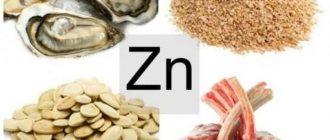One of the most effective antioxidants that can significantly improve health is vitamin C. Its other names are also common - ascorbic acid or ascorbate. The human body receives vitamin C through food. It is too unstable to high temperatures, which was one of the reasons for its shortage. The results of the scientists' research made it possible to assess the significance of the compound for all organ systems and became the basis for judging the consequences of its deficiency. Let's figure out how to determine the lack of vitamin C, and how to compensate for the deficiency.
Foods Rich in Vitamin C
Vitamin C is found in plant foods - vegetables, fruits, berries. It has always been believed that the highest dosages of vitamin C are found in citrus fruits, and the more acidic the citrus, the more “ascorbic acid” it contains. This is completely wrong!
Firstly, a sour lemon contains one and a half times less vitamin than a sweet orange, and secondly, both fruits contain little of it - about the same amount as apples. There is much more vitamin in dill, walnuts, rose hips, and sea buckthorn. They should be used intensively for viral diseases, instead of endlessly drinking tea with lemon.
Ascorbic acid as a medicine
If there is a lack of vitamin in the body, it is recommended to replenish the supply with medications. Release form:
- dragee;
- pills;
- ampoules;
- powders.
The form of use is determined by the attending physician depending on the nature of the disease. The instructions for use warn of possible side effects if the drug dosage is incorrect.
Ascorbic acid dragees are prescribed to children because they resemble candy and not medicine. Effervescent tablets are popular among professional athletes. One tablet, diluted in a glass of water, replenishes vitamin reserves and invigorates before a grueling workout. The powder is available in sachets.
An injection solution is prepared in ampoules. One ampoule contains 50 mg and 100 mg, which allows you to administer the required dose of the drug at a time.
An overdose negatively affects the mucous membrane of the stomach and digestive tract as a whole. Pregnant women are at risk because the metabolism between the mother and fetus is disrupted. As a result, the child develops allergies, and the mother may develop problems with the gastrointestinal tract.
Increased need for vitamin C
In pregnant women, the need for it increases by about 10 mg, and in nursing women - by almost half. Also, increased amounts of vitamin C are needed by smokers and those who are exposed to harmful occupational factors.
During acute illnesses, it is permissible to consume up to 10 daily norms at a time! When recovering from various diseases, under high loads, in the cold season, you also need more vitamin C than usual.
Although many situations require increased use of vitamin C and the use of high dosages, it is not recommended to increase doses indefinitely. When consuming more than 2 g of the substance per day, a toxic effect of ascorbic acid on kidney tissue is observed.
What products contain
The leader in vitamin C content can rightfully be called rose hips. In second place you can put currants, Brussels sprouts and sea buckthorn. There is also a lot of ascorbic acid in the following foods:
- bell pepper;
- kiwi;
- radish;
- tomatoes;
- sorrel;
- cabbage;
- horseradish;
- gooseberry;
- cauliflower;
- green pea;
- wild garlic;
- porcini mushrooms and chanterelles;
- citrus.
In spring, the best source of vitamin will be young nettle. It is added to pies, casseroles, omelettes, and a traditional dish made from nettles is green borscht.
Biological role of vitamin C
The functions of vitamin C are numerous, and they make its use very important for maintaining and improving health. The meaning of ascorbic acid is as follows:
• Is an antioxidant. This means that the substance resists the destructive process of lipid peroxidation in tissues, protects the body from diseases and aging. • Strengthens the immune system, increases its “alertness” against harmful microorganisms, especially viruses. • Promotes the full formation of connective tissue, strengthens bones and joints. • “Helps” folic acid, vitamin A, and iron to be absorbed and exhibit their effects. • Improves skin condition. Thanks to its independent anti-inflammatory effect, it reduces the severity of inflammation in acne and acne. • Reduces bleeding, strengthens blood vessels. • Prevents the rapid development of atherosclerosis, inhibits the growth of cholesterol plaques in blood vessels. • Reduces the toxicity of alcohol, improves detoxification, neutralization of many toxic and harmful substances: components of tobacco smoke, substances that pollute water and air, drug metabolites, etc. • Reduces the negative impact of stress on health. • Accelerates the restoration of various tissues when they are damaged. • Has a brightening effect on the skin.
Application in cosmetology
Ascorbic acid, as an antioxidant, is included in anti-aging cosmetics for women. Products based on vitamin C prevent the effects of free radicals on the skin of the face, which is why it is used in the manufacture of anti-aging creams.
The presence of a vitamin in the list of cosmetic ingredients does not guarantee quality, since the amount of the element used is not always enough to produce an effect. The optimal dose in cosmetology ranges from 0.3% to 10%. Professional preparations on the labels contain information about the amount of active substance and the percentage of components.
Due to the sensitivity of the vitamin to light and air, cosmetics based on it are produced in sealed, tinted packaging with a dispenser.
Vitamin C-based facial cosmetics perform the following functions:
- protect the skin from exposure to infrared rays;
- synthesize collagen;
- restore collagen fibers;
- slow down the aging process;
- increase skin tone;
- prevent the appearance of age spots;
- relieve inflammation;
- refresh and improve complexion;
- strengthen vascular walls.
Best materials of the month
- Coronaviruses: SARS-CoV-2 (COVID-19)
- Antibiotics for the prevention and treatment of COVID-19: how effective are they?
- The most common "office" diseases
- Does vodka kill coronavirus?
- How to stay alive on our roads?
In winter, to replenish vitamin C reserves, it is necessary to take vitamin and mineral complexes for the skin.
Ascorbic acid is useful for hair; it gives hair shine and silkiness. Liquid vitamin C in ampoules is added to ordinary shampoo or hair conditioner. Nutrition along the entire length is provided during each wash.
Signs of vitamin C deficiency
Vitamin C deficiency is common and its symptoms are familiar to many people. Among the signs of hypovitaminosis C, there may be such phenomena as a tendency to bleeding gums, easy formation of bruises on the body, frequent incidence of colds, a predisposition to exacerbations of existing chronic diseases, slow healing of injuries and delayed recovery, discomfort in the joints, problematic skin, hair loss, nosebleeds etc.
With a critical deficiency of the vitamin, a disease known as scurvy develops. It is rare in the modern world, but used to be extremely common. Patients experienced frequent bleeding, teeth falling out, and serious damage to joints and bones.
Vitamin interactions
To support vitality and prevent a number of diseases, many people prefer to use multivitamin pharmaceuticals. When choosing such drugs, it is important to take into account the compatibility of the vitamins that are present in a particular drug. We can speak of a correct combination if 2 or more components interact with each other, and they enhance each other’s effect and have a positive effect.
With a deficiency of one or more nutrients, as well as with their excess, a person develops serious health problems.
To exclude such conditions, the combination of vitamins must be correct and balanced.
- A and E interact well with each other, but there should be less of the latter, otherwise the absorption of the former is impaired;
- B2 (riboflavin) and B6 (pyridoxine) are ideal with K;
- B12 can be combined with B5;
- P enhances the properties of vitamin C, E, B9 (folic acid);
- F enhances the properties of A, D, E, as well as group B;
- B6 (pyridoxine) and B2;
- B12 (cyanocobalamin) is recommended to be used in combination with B5, B9;
- Vitamin C increases the activity of vitamin E.
With the right combination, there will be a certain result, which will be different from if each component is taken separately.
Factors influencing the vitamin C content of foods
Ascorbic acid is a “fragile” vitamin. Upon contact with air, it oxidizes, which leads to some loss of its properties. For this reason, food containing vitamin C is not recommended for long-term storage. Fruit and vegetable juices should be drunk freshly squeezed.
The vitamin is also destroyed when exposed to high temperatures; cooking leads to almost 100% loss of this substance. Therefore, vegetables and fruits should be consumed fresh.
Some of the ascorbic acid is retained in products when frozen; a minimal amount of it “survives” when dried. The destruction of the vitamin is also observed in light. This means that you need to use dark, cool places to store vegetables.
Important fact. The vitamin C content of different products depends greatly on their shelf life. The maximum amount of ascorbic acid is present in ripe, fresh fruits. Meanwhile, kiwis, oranges, and lemons that “come” to our country were collected long before they reached optimal ripeness, and more than 2 months can pass from their collection to consumption. Accordingly, they lose most of their beneficial properties and vitamin C.
As a result, in order to meet the daily requirement for ascorbic acid, a person needs to eat several kilograms of plant foods daily. This is impossible. And this is precisely what leads to the fact that most of us live in conditions of chronic hypovitaminosis and need to take additional dosages of vitamin C.
Mechanism of action of the drug
Ascorbic acid is involved in almost all metabolic processes, redox reactions, synthesis and absorption of other vitamins, transformation of glucose, fats and protein. Vitamin C has a powerful antioxidant effect, regulates blood circulation, is responsible for the permeability of cell membranes, the integrity of vascular walls, and the health of mucous membranes and skin. Its deficiency leads to weakening of cellular and humoral immunity, insufficient function of the liver, kidneys, thyroid gland, heart, kidneys, deterioration of muscle tissue, disruption of hormone production, formation of red blood cells, and increases the risk of thrombosis.
Vitamin C is consumed daily in large quantities, is not synthesized or accumulated in the body, and comes only from the outside. Its costs increase with stress, infectious and other diseases, with smoking, heavy physical activity, taking potent medications, during the period of active development, during pregnancy and lactation. Therefore, deficiency occurs quite often, and hypervitaminosis is extremely rare. The main reason for the lack of ascorbic acid is poor nutrition. Vitamin C is concentrated in fresh fruits and greens, but is easily destroyed during long-term storage and heat treatment of products.
Pharmaceutical preparations are additional sources of ascorbic acid. The effervescent form of the vitamin in the form of a liquid solution ensures almost instantaneous absorption into the blood from the intestines. Then the substance penetrates the tissues of all internal organs and biological fluids. Excess ascorbic acid is filtered by the kidneys and excreted in the urine.
Vitamin compatibility chart
The table will help you become more familiar with the possible combination of useful components.
- “+” - good;
- “-” - bad;
- “#” is neutral.
| A | IN 1 | AT 2 | AT 5 | AT 6 | AT 9 | AT 12 | WITH | E | D | |
| A | A | # | # | # | # | # | — | # | + | # |
| IN 1 | # | IN 1 | # | # | # | # | # | # | # | # |
| AT 2 | # | # | AT 2 | # | + | + | — | # | # | # |
| AT 5 | # | # | # | AT 5 | # | # | + | # | # | # |
| AT 6 | # | # | + | # | AT 6 | # | # | # | # | |
| AT 9 | # | # | + | # | # | AT 9 | + | # | # | # |
| AT 12 | — | # | — | + | # | + | AT 12 | — | — | # |
| WITH | # | # | # | # | # | # | — | WITH | + | # |
| E | + | # | # | # | # | # | — | + | E | # |
| D | # | # | # | # | # | # | # | # | # | D |
What vitamins cannot be combined
Good compatibility of vitamins can provide the body’s daily needs. If you take substances that interact poorly with each other, at best there will be no effect from such treatment, and at worst, the risk of developing side effects will increase.
Before you start taking vitamins, you should familiarize yourself with their compatibility with each other.
Poor compatibility can disrupt the absorption of one or more components.
- Vitamin D cannot be combined with A, since they neutralize each other’s effects;
- Vitamin B2 leads to the oxidation of B1;
- Vitamin B1, if combined with B12, can cause an allergic reaction;
- Vitamin D is not absorbed if taken with vitamin E;
- Vitamin B12 eliminates the properties of C and PP;
- Vitamins A and D neutralize each other;
- Vitamins E and D must be taken separately, since the first component is poorly absorbed under the influence of another substance;
- Oxidation of vitamin B1 occurs under the influence of vitamin B2.
Many multivitamins contain substances that interact poorly with each other, but their composition is selected in such a way that it does not have a negative effect on the human body.
Which microelements can and cannot be combined
Microelements are building materials for many biological processes. Their compatibility has been well studied, which allows many pharmaceutical companies to produce various multivitamin medications that contain 2 or more active ingredients.
- Iron and copper interact with vitamin A and B2;
- Vitamin B2 increases the healing properties of zinc, which improves the absorption of A;
- Magnesium interacts with B vitamins, with the exception of vitamin B1;
- Bromine increases the absorption of phosphorus, calcium and magnesium;
- A good combination is zinc and selenium in combination with A and E, Omega-3.
Not all minerals interact well with vitamins. Some of them interfere with the absorption of beneficial components, while others reduce their effectiveness.
There are many examples of bad combinations of organic compounds:
- Vitamin B1 is poorly compatible with magnesium and calcium;
- Iron and copper interfere with the absorption of vitamin B2;
- Vitamin B9, together with zinc, promotes the formation of insoluble compounds, which impairs their absorption;
- Iron, copper and manganese make vitamin B12 inactive;
- Vitamin C enhances the removal of copper from the body.
In the process of producing multivitamins, the manufacturer always takes into account the permissible doses of one or another component of the medicine.








